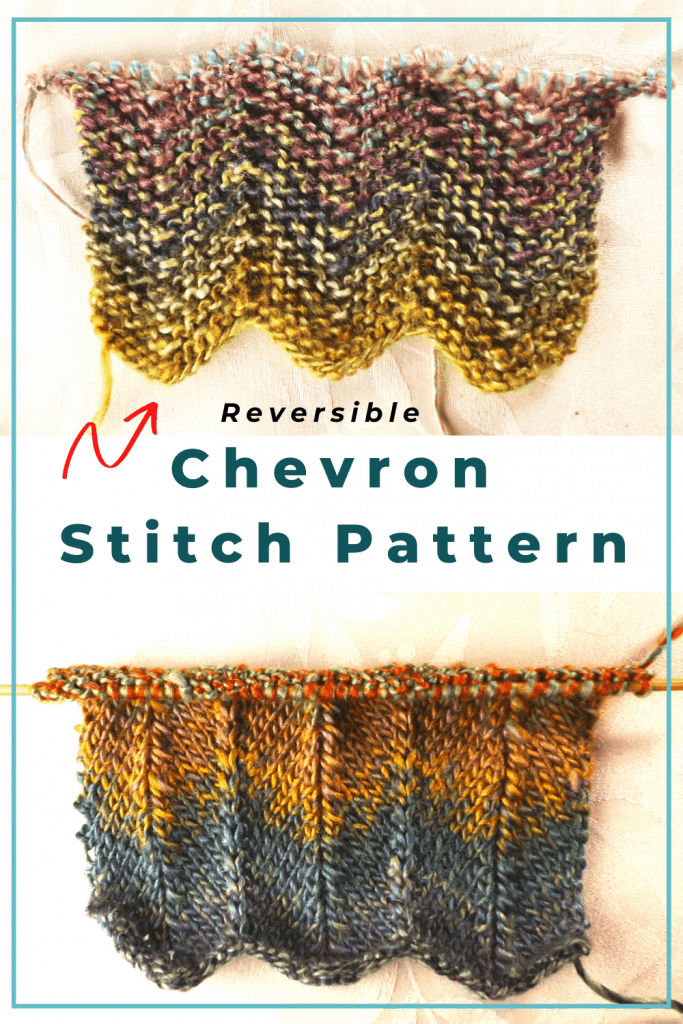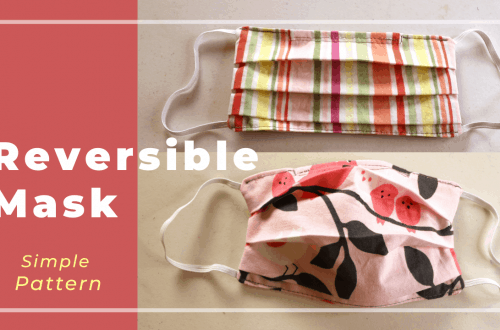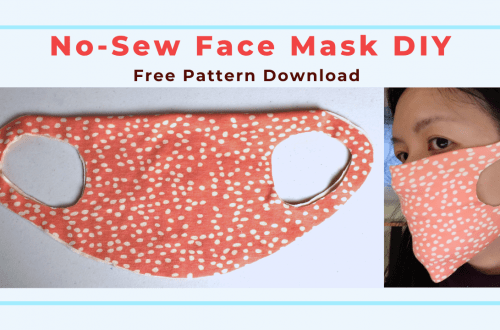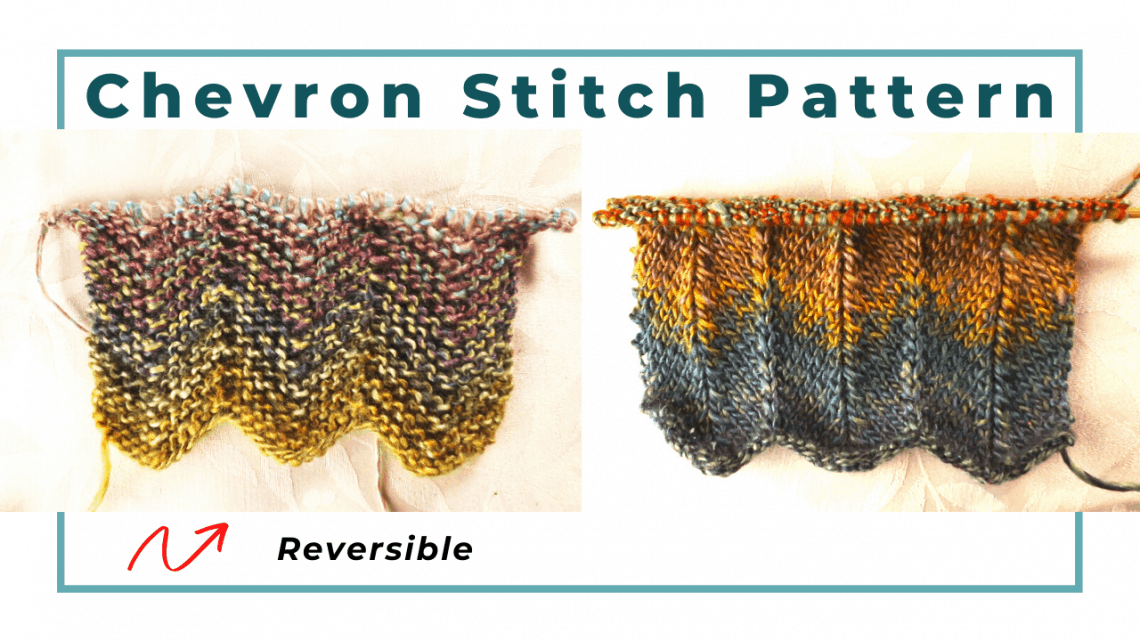
2 Chevron knitting stitches — reversible and stockinette
The Chevron is a classic stitch in knitting. It can be done easily with a simple pattern repeat. We will show you a reversible garter stitch chevron and a non-reversible stockinette chevron stitches.
Since there are a lot of increasing and decreasing stitches, hand knitting is actually easier than machine knitting the Chevron stitch. I like multicolor gradient yarns so you can see interesting color changes.
This simple Chevron stitch can be a scarf, a baby blanket, or a throw blanket. It can be as wide as you want with a multiple of 12 or 14 stitches (this number can be modified too, see below). You can add selvage stitches on each side to create clean edges and extra stitches to seam up later.
Free PDF pattern download: Click Here.
Watch our video about 2 ways of the Chevron knitting stitch patterns
The reversible Chevron or zigzag stitch pattern
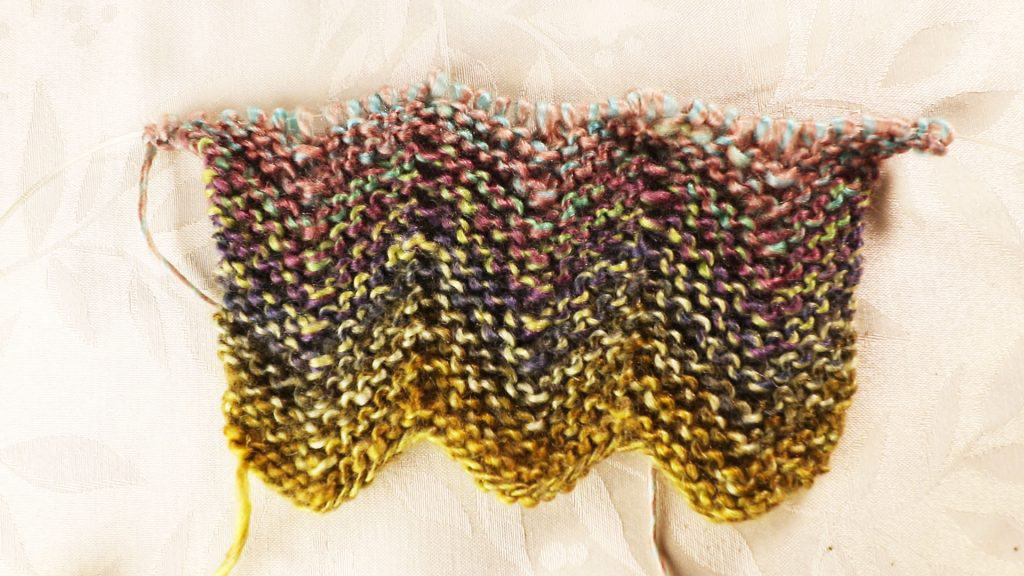
Cast on multiple of 12 stitches (12, 24, 36,…), plus optional 2 edge stitches.
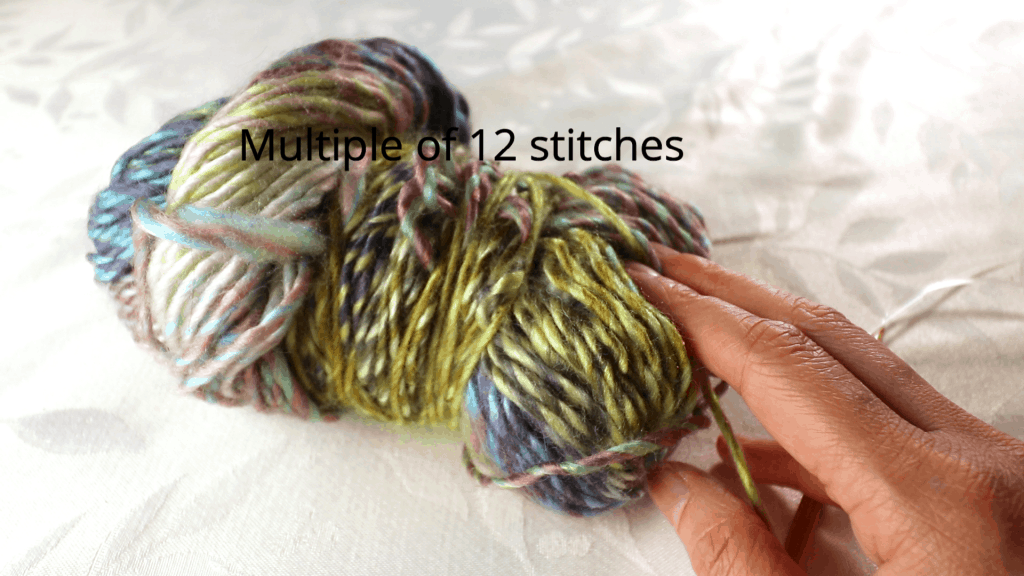
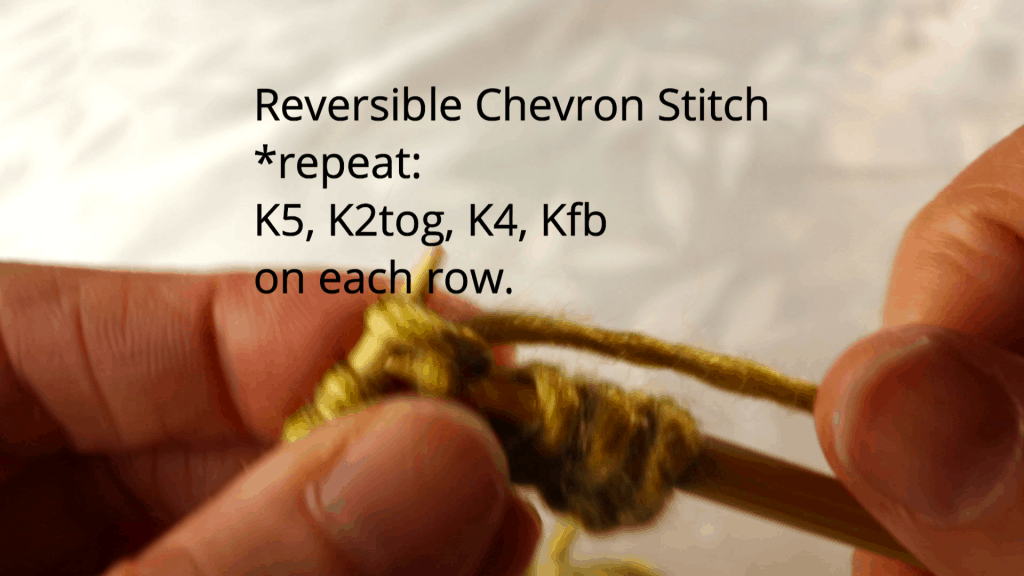
Pattern repeat:
*(K5, K2tog, K4, Kfb), repeat * until the end of the row
Knit this repeat for every row including front and back. \
It is that simple.
The “knit 2 together” decreases one stitch, and the “knit front and back” increase one stitch.
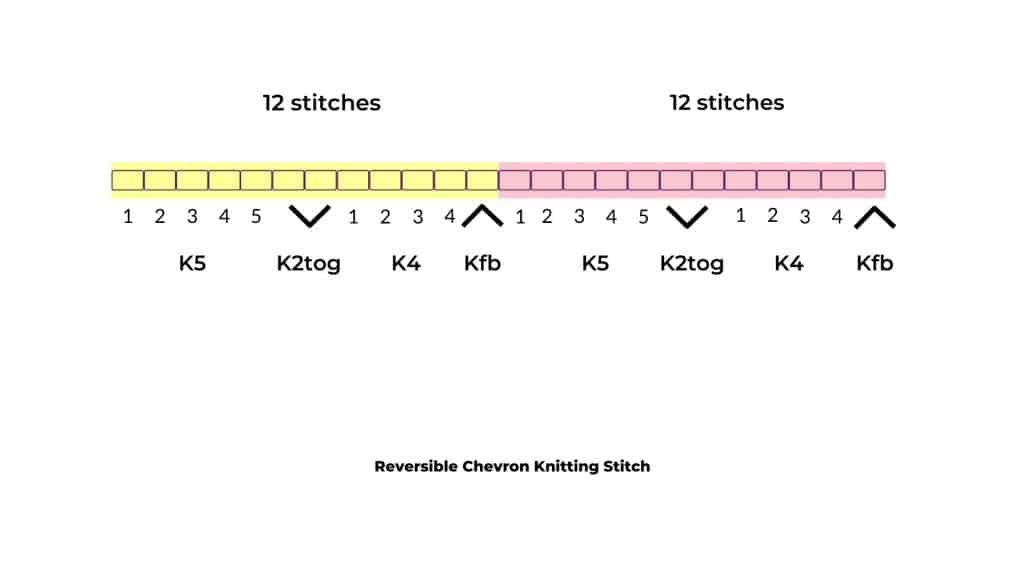
In my sample, I cast on 36 stitches with a long-tail cast on. (Any cast-on method will work).
Knit the repeat until the end of the first row. Turn over, and start the same repeat until the end of the row. Continue in every row until the length you like, bind off in knits.
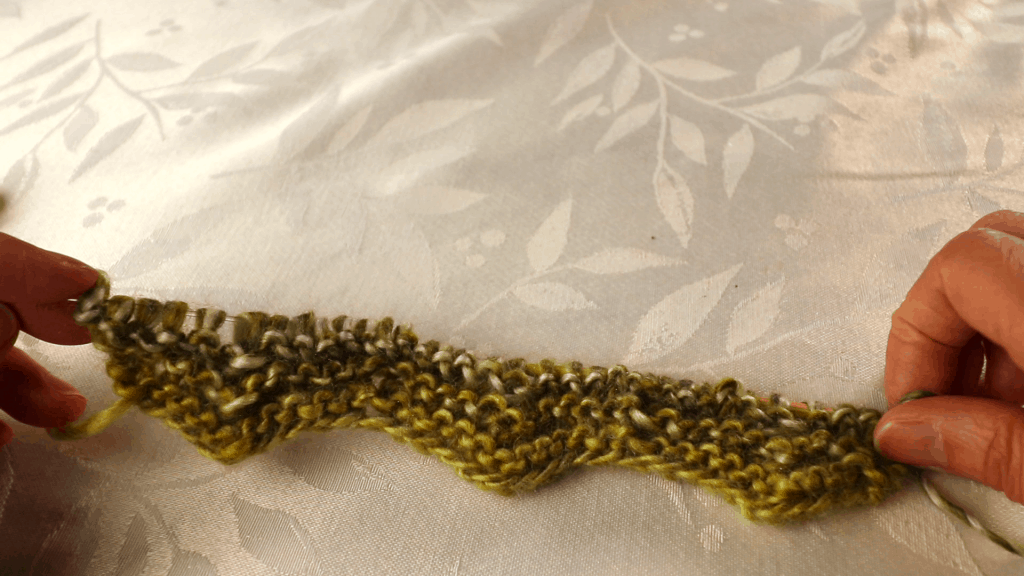
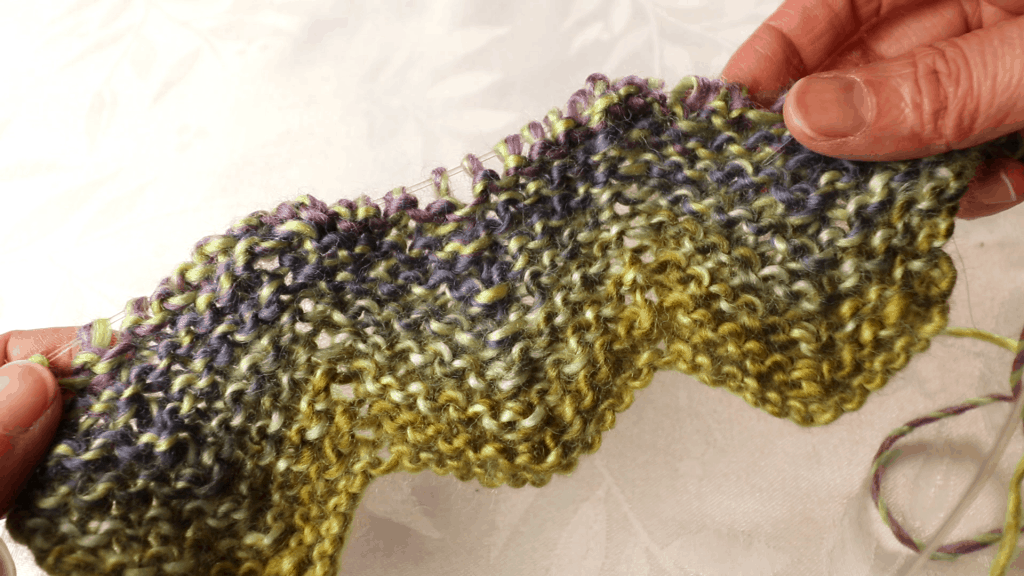
The knitted piece looks the same on the front and back sides, and it does not curl like the stockinette stitches.

Adjusting the pattern width
The knit 5 and knit 4 in the pattern repeat are the numbers you can increase or decrease to change the knitting width. For example, you can add one stitch so it becomes knit 6 and knit 5, or reduce 1 stitch so it becomes knit 4 and knit 3.
The non-reversible (Stockinette) Chevron stitch pattern
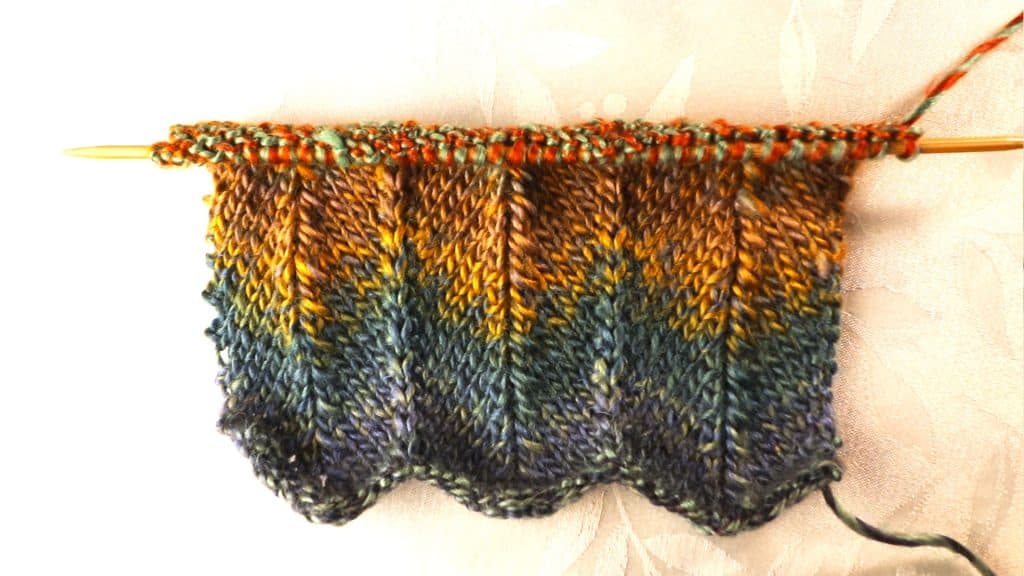
Cast on multiple of 14 stitches for this pattern.
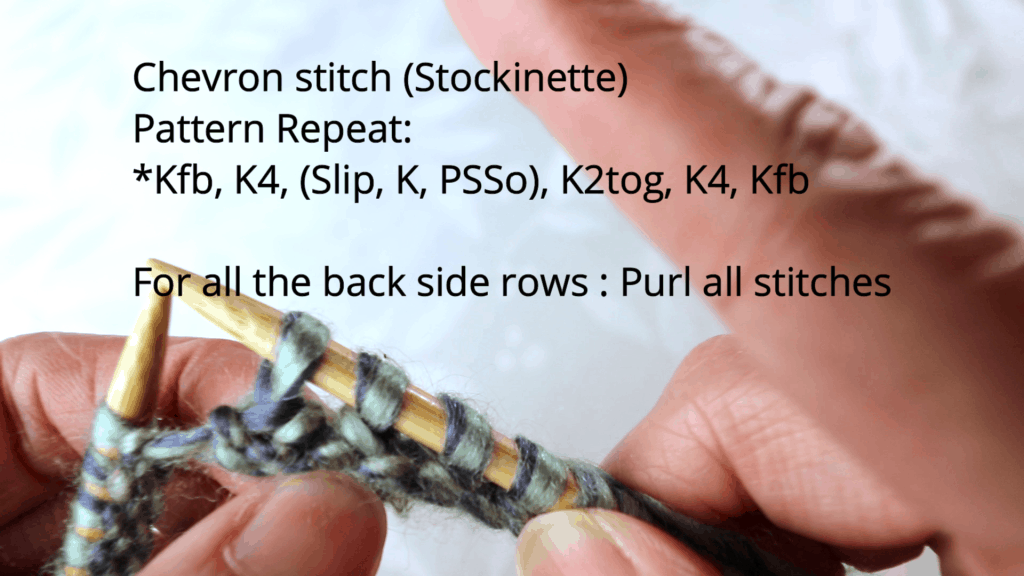
Pattern repeat:
*Kfb, (Slip, knit, PSSO), K2tog, K4, Kfb.
Repeat the above until the end of the row.
For all the back side rows: Purl all stitches
In my sample, I cast on 42 stitches. That is 3 times the 14 stitch pattern repeat.
Follow the pattern repeat above until the end of the first row.
Turn over, the back row will be all purl stitches.
Repeat these 2 rows until the length you like and bind off.

Slip, Knit, PSSO (SKP)
The “Slip, Knit, PSSO” stitch creates a left-leaning decrease, while the “Knit 2 together” (K2tog) creates a right-leaning decrease. They pair up nicely and creates symmetry. If this is too complicated, you can always use K2tog instead of the “Slip, Knit, PSSO” stitch.
So how to knit the “Slip, Knit, PSSO” stitch?
You simply slip the next stitch purl wise to the right needle, knit the next stitch, now these 2 stitches are on the right needle. Next, pick up the slipped stitch (the second stitch on the right needle), cross over the knit stitch (the first stitch on the right needle), and then dropped the stitch off the right needle. One stitch decreased.
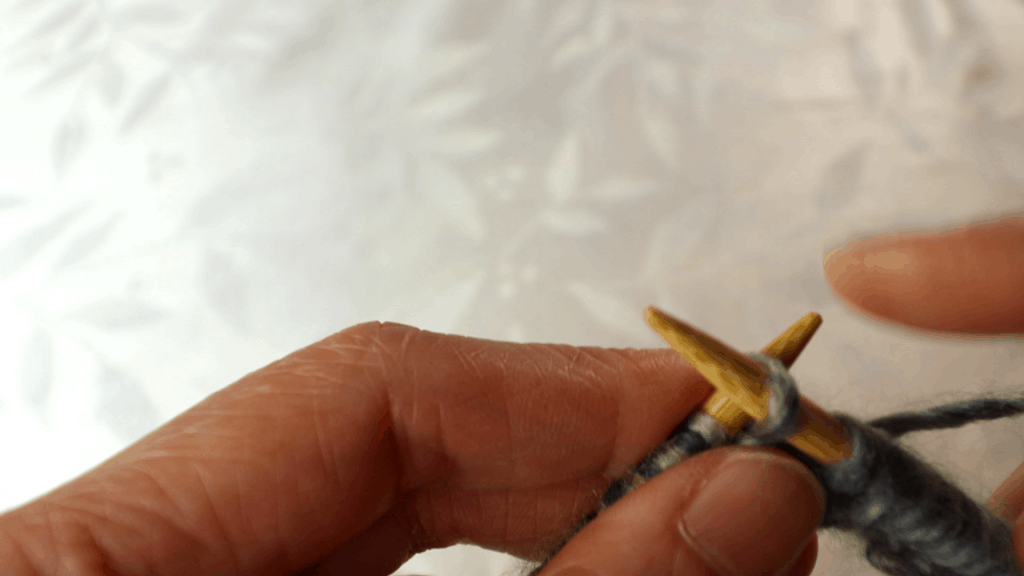

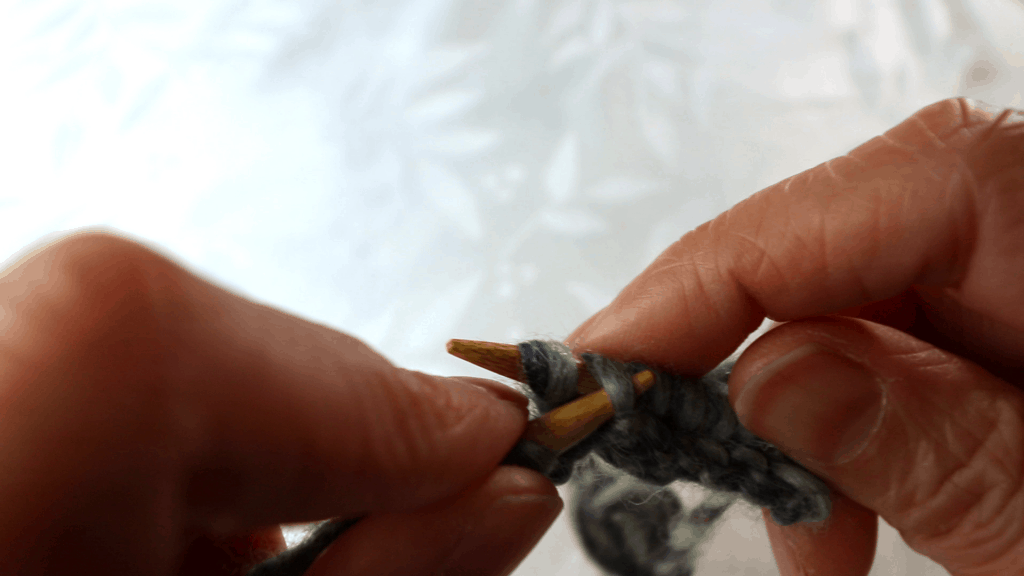
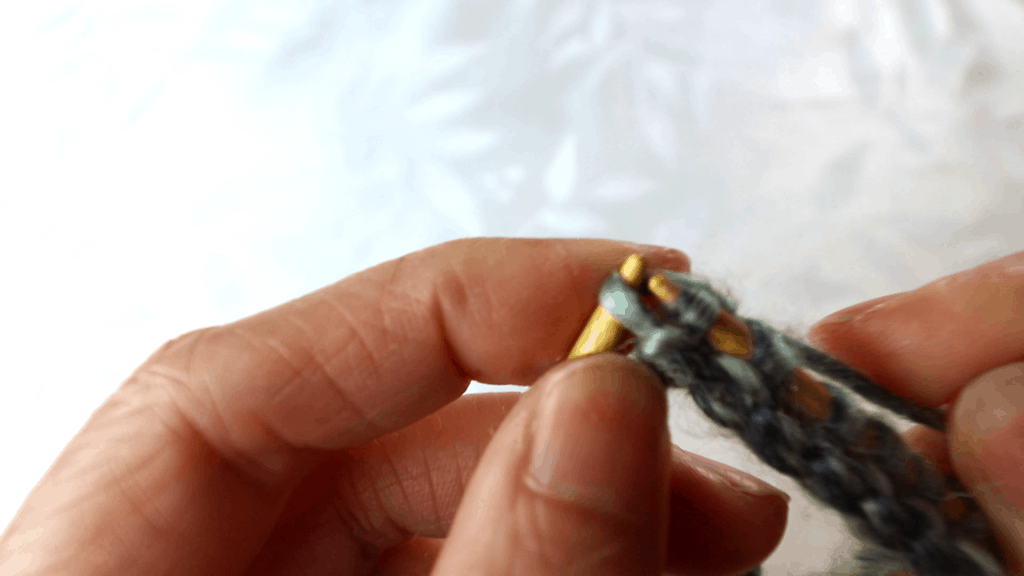
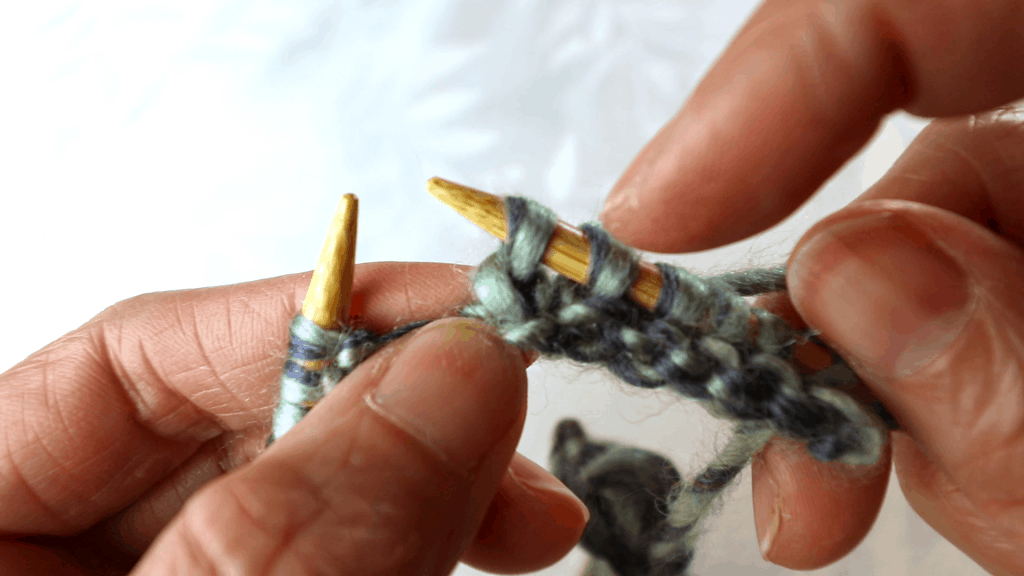
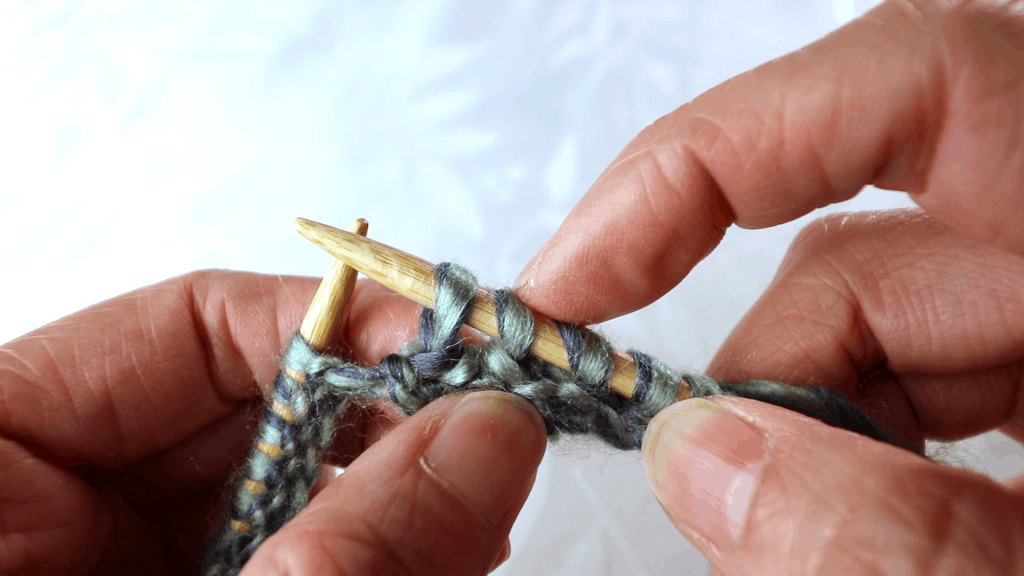
Adjusting the pattern width
The “knit 4” in the pattern repeat are the numbers you can increase or decrease to change the knitting width. For example, you can add one stitch so it becomes knit 5, or reduce 1 stitch so it becomes knit 3.

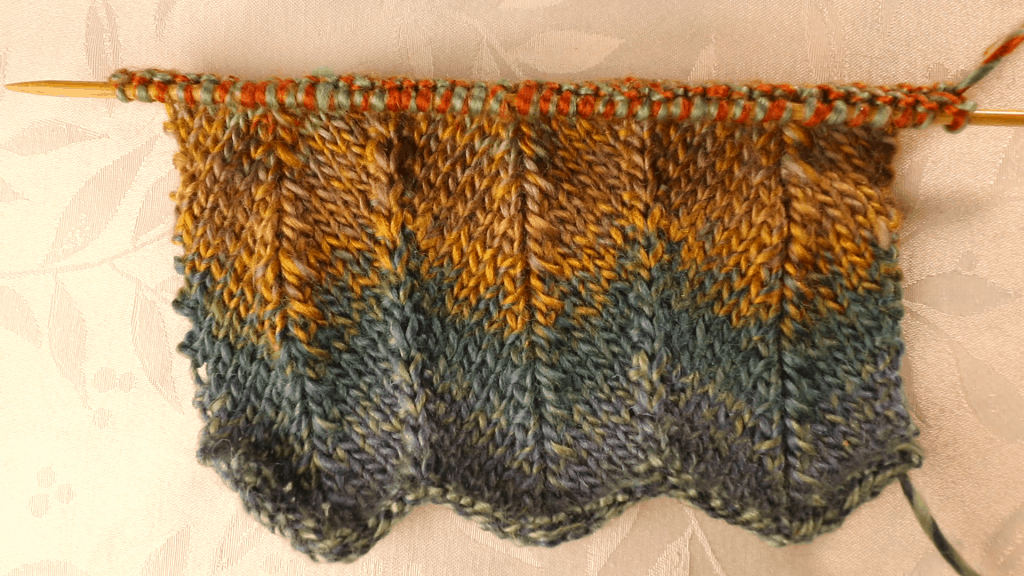
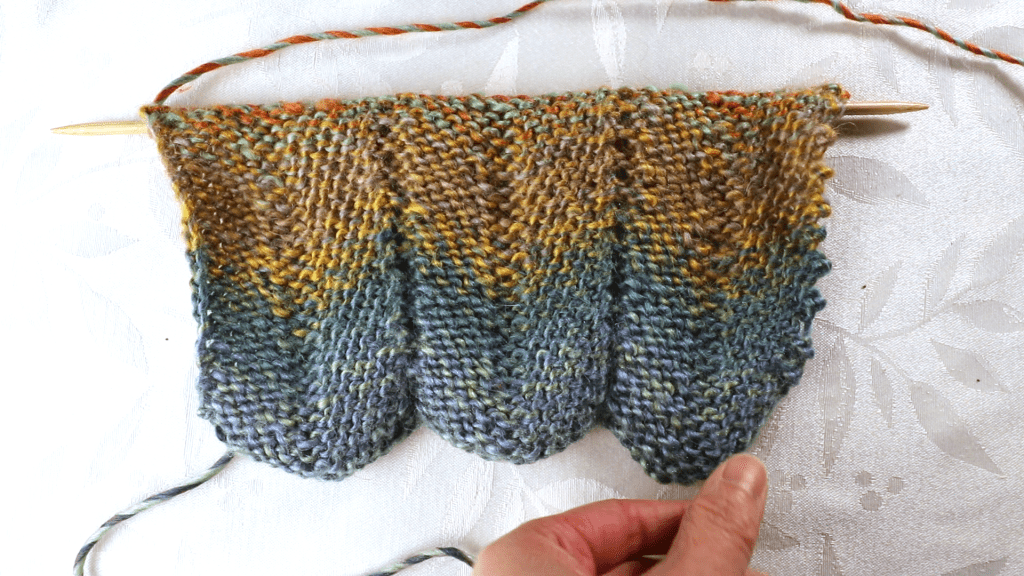
After knit a few rows, you will see the chevron shape starts to form in the bottom. Since this is basically a stockinette stitch, the piece will curl just like stockinette stitches.
If you use a chunky weight yarn, you can knit up a blanket or scarf quickly.
Happy knitting!
